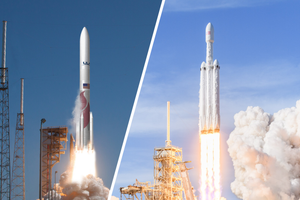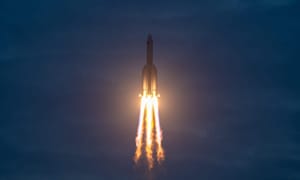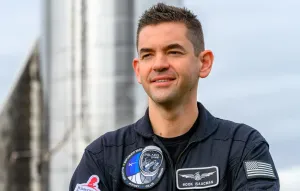
Nov 4, 2023
U.S. Space Force awards $2.5 billion to ULA and SpaceX for 21 launches
The United States Space Force recently announced it had assigned the next twenty-one launches of its 'National Security Space Launch' phase two program. The twenty-one launches are assigned as follows; SpaceX received ten missions valued at $1.23 billion dollars, and United Launch Alliance received eleven missions valued at $1.3 billion dollars.
The ten missions assigned to SpaceX are; SDA T1TL-F, SDA T1TR-A, USSF-57, NROL-77, SDA T1TR-E, GPS 3-10, USSF-75, SDA T2TL-A, SDA T2TL-C, and USSF-70. Three of these launches will be on Falcon Heavy with the remaining seven being launched on Falcon 9.
The eleven missions assigned to United Launch Alliance are; GPS 3-9, NROL-73, NROL-56, STP-5, SILENTBARKER 2/NROL-118, GPS 3F-1, NROL-100, USSF-95, NROL-109, SDA T2TL-B, and USSF-25. Interestingly with the $1.3 billion United Launch Alliance received each launch of Vulcan will cost $118 million dollars on average.
The most notable mission announced from this was USSF-25 which will be the launch of DARPA (Defense Advanced Research Projects Agency) and NASA's DRACO (Demonstration Rocket for Agile Cislunar Operations) nuclear thermal spacecraft. The DRACO spacecraft hopes to prove nuclear thermal propulsion in space for eventual use on a crewed Mars and Moon missions in the future. It was announced back on the 26th of July 2023 in a NASA hosted media teleconference that the United States Space Force would provide the launch and launch site support with it being treated as a national security payload.
Originally in 2020, the 'National Security Space Launch' phase two launches were assigned in a sixty-forty split between United Launch Alliance and SpaceX but recently assigned more launches to SpaceX than previously anticipated. In a statement to CNBC the United States Space Force said the following;
“It is imperative to rapidly deliver critical space capabilities to the Joint Warfighter as soon as they are ready to be launched — we cannot leave capability sitting on the ground”
And in another statement to SpaceNews they also said;
“The government considered multiple factors in the mission assignment analysis process, including the launch system maturity assessment process, production capability and capacity, and the ability to meet the order year launch demand”
And also said to Ars Technica;
"The USSF maintains a close partnership with our Launch Service Providers to meet launch requirements and ensure the successful delivery of critical assets to our warfighters"
The 'National Security Space Launch' phase two program is currently expected to run until 2027.



